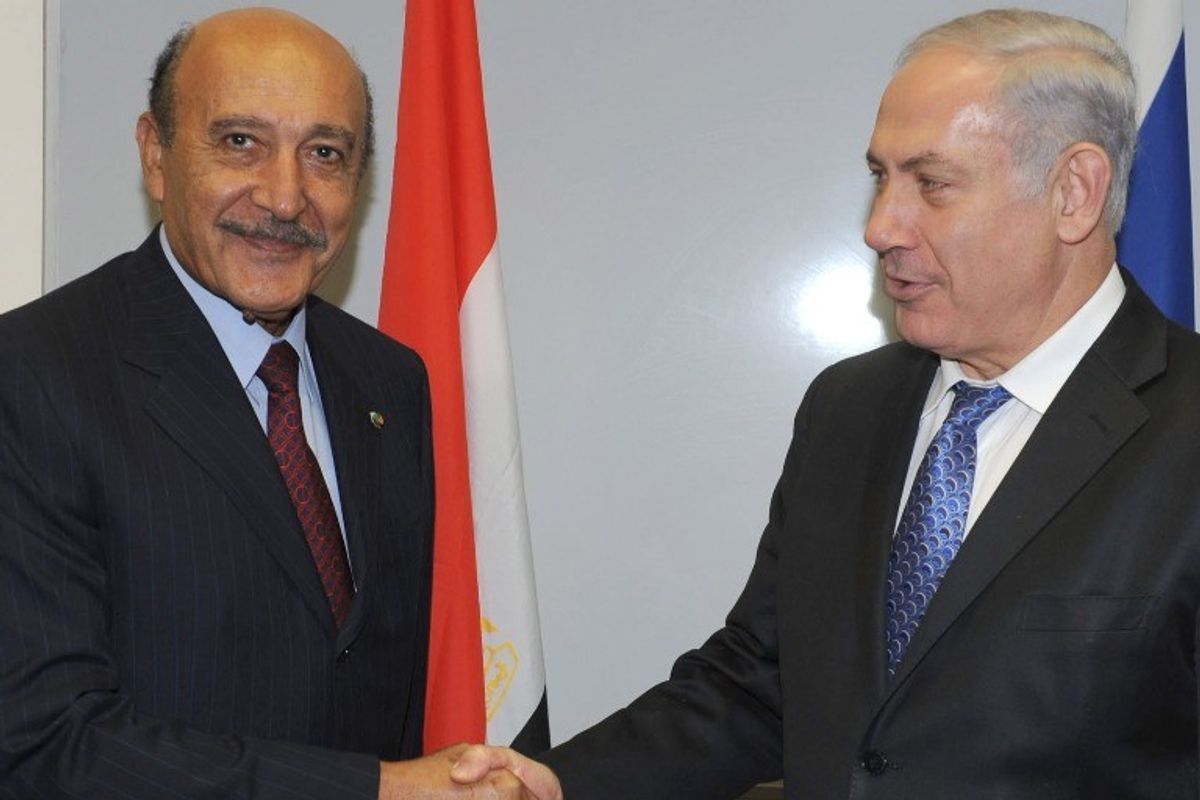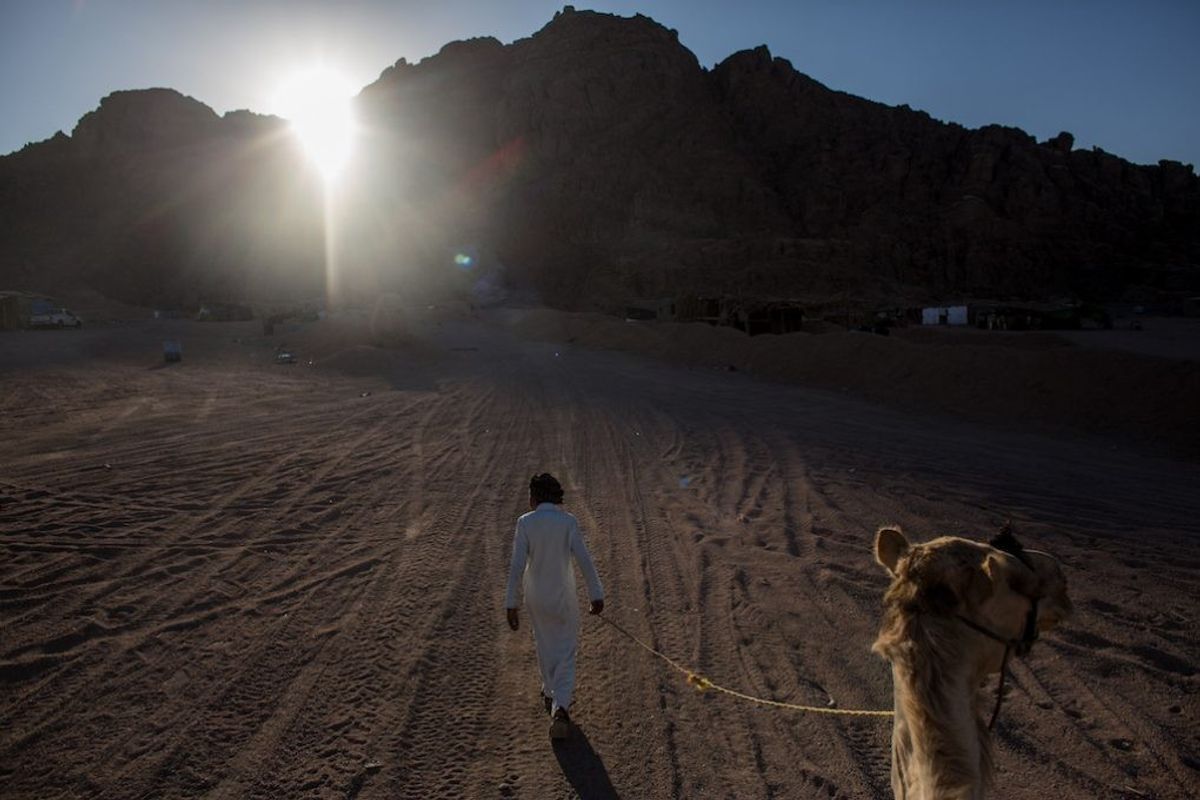August 14 2013 was the most violent day in contemporary Egyptian history. Security forces brutally dispersed demonstrations in northern Cairo’s Rabaa al-Adawiya Square and Giza’s al-Nahda Square, killing hundreds of Islamists who were protesting the ouster of Egypt’s first elected president, Muslim Brotherhood leader Mohamed Morsi, six weeks earlier. Human Rights Watch later put the death toll at more than 800 civilians. Meanwhile, the incident became a rallying cry for the Brotherhood and its allies, who vowed to avenge the crackdown and reinstate Morsi.
Yet the Rabaa massacre, as it became known, was also significant for another reason: it reflected the total failure of the Brotherhood’s post-Morsi strategy, and its defeat in the power struggle with the military-backed government that assumed control following Morsi’s ouster. Three years later, the Brotherhood still has not recovered: many thousands of its leaders are in prison or exile, at least hundreds more have been killed, and the organization is no longer a significant player on the ground.
It is worth recalling that Morsi’s overthrow caught the Brotherhood by surprise. When millions of Egyptians took to the streets on June 30, 2013 to protest the Brotherhood leader’s autocratic and failed presidency, Brotherhood leaders told their members that the military stood firmly with Morsi. And they continued to exude this confidence even after the military warned Morsi on July 1 that it would intervene with its own “road map” if he failed to respond to the protesters’ demands within 48 hours.
So when Defense Minister Abdel Fatah al-Sisi, flanked by a broad spectrum of Egyptian figures, declared Morsi’s ouster on the evening of July 3, the Brotherhood responded in haste. It ordered cadres from across the country to gather in Rabaa al-Adawiya and al-Nahda Squares, where the Brotherhood had been demonstrating in support of Morsi for nearly a week. These squares became no-go zones for the Egyptian police after Morsi’s overthrow, and served as sanctuaries where wanted Brotherhood leaders avoided arrest, held meetings, and addressed the international media.
Despite the military’s significant advantages in arms and capacity, the Brotherhood sincerely expected to win the ensuing power struggle. It believed that only a small number of generals had supported Morsi’s toppling, and that its protests would foment a split within the military and thus restore Morsi to power. The Brotherhood further believed that it could withstand any attempt to disperse the protests, given that its members were willing to die for the organization’s cause. “If they want to disperse the sit-in, they’ll have to kill 100,000 protesters,” Brotherhood spokesman Gehad el-Haddad told journalist Maged Atef. “And they can’t do it [because] we’re willing to offer 100,000 martyrs.” At the same time, the Brotherhood called for pro-Morsi protests across the country. Demonstrators blocked roads and clashed with security forces. All of these activities were intended to send a very clear message to the new regime: Egypt would not know stability until the coup was reversed.
The regime got the message, and it was similarly determined to win the power struggle. “We were sure of one thing: that no country can go on if a sector of its population just does not recognize [and] defies the authority,” Hazem el-Beblawi, who served as Egypt’s prime minister during this period, told me during an October 2014 interview. “This is unacceptable.”
The government also made it quite clear that it was willing to use significant force against the Brotherhood’s protests. Fifty-one Morsi supporters were killed on July 8 outside the Republican Guard Headquarters, where Morsi was being held. Then, on July 24, Defense Minister Sisi called for mass demonstrations to “authorize” the military to fight terrorism, by which he meant the Brotherhood, and many thousands of Egyptians responded by pouring into the streets two days later. Still, since the first month after Morsi’s ouster coincided with the holy month of Ramadan, the government delayed its plans to disperse the Brotherhood’s protests, and allowed Western diplomats to explore possibilities for a negotiated resolution. “We were aware that such a thing cannot be solved without some casualties, but we wanted as much as we [could] to delay it, but not to the extent that the perception of respect [for] the government should deteriorate,” Beblawi said.
When negotiations failed, however, Egypt’s cabinet met on July 31 and authorized the Minister of the Interior to “take all necessary measures to disperse protests or sit-ins.” To minimize bloodshed, some ministers suggested that security forces should encircle the protest sites and permit protesters to leave, but not allow new protesters or goods to enter. This type of siege strategy would have ended the protests more gradually, but would have also entailed far fewer casualties. According to Beblawi, however, the Interior Minister rejected this idea, arguing that a siege strategy would allow the Brotherhood to decide when to initiate hostilities with security forces, which would have put the police at a disadvantage. This, of course, isn’t how police typically deal with protests – it’s the way generals strategize during war. And that’s exactly how the new government viewed this particular moment in time. So the cabinet ultimately deferred to the Interior Minister, empowering the police to disperse the protests whenever they were prepared.
The Rabaa massacre dealt a very severe blow to the Brotherhood. Beyond the high death toll, Brotherhood leaders and cadres lost their physical sanctuaries, and during the next few months many thousands of them landed in either prison or exile. By the end of 2013, the Brotherhood’s notoriously hierarchical organization had been thoroughly decapitated, rendering it incapable of executing any sort of nationwide strategy within Egypt. While the Brotherhood continues to promote its ideas and political narrative from its de facto base in Istanbul, it no longer represents a significant threat to the current government and is barely visible within Egypt today.
I asked Beblawi whether he had any regrets about Rabaa. After all, when security forces killed 28 Christian demonstrators in downtown Cairo in October 2011, Beblawi resigned from his post as Finance Minister in protest. But when it came to Rabaa, Beblawi believed that Egypt’s future was at stake, and didn’t envision a better alternative. “It [was] very painful,” he said. “But you go to war, and many of your kids … lose their arms and even their lives, but you save the country. It was a terrible thing, very nasty, and the decision was not easy, but inevitable.”
For the Brotherhood, Rabaa remains an important symbol of its “steadfastness” in resisting Morsi’s overthrow, and those who were killed at Rabaa al-Adawiya and al-Nahda Squares are celebrated as holy martyrs on Brotherhood social media pages and elsewhere. Yet, in recent months, Muslim Brothers have started to reassess their leaders’ failed strategy during that period. In this vein, one Morsi supporter recently asked on Facebook why the Brotherhood simply remained in Rabaa al-Adawiya Square after the Egyptian military issued its 48-hour ultimatum to Morsi on July 1, 2013, rather than mobilizing to the Republican Guard headquarters where Morsi was staying to prevent the military from arresting him.
Of course, these types of questions became even more pertinent after last month’s failed coup in Turkey, as Islamists studied how Turkish President Recep Tayyip Erdogan managed to avoid Morsi’s fate. For example, Amr Farrag, who founded the Brotherhood-affiliated news site Rassd, recalled how on the day after Morsi’s ouster, Muslim Brothers were instructed to deal respectfully with soldiers who were entering and exiting a Ministry of Defense building right next to Rabaa al-Adawiya Square. “Our dear brothers were saying, we are peaceful,” Farrag posted on Facebook. “Our peacefulness is stronger than bullets. Fine, so we got smacked on our necks.”
These reassessments reflect the most significant change within the Brotherhood in the three years since the Rabaa massacre: the organization is increasingly fractured. Brotherhood leaders are either in prison, in hiding, or scattered among various countries in exile, and this has catalyzed an internal power struggle that hasn’t been resolved yet. In this sense, there are still many Muslim Brothers but no Brotherhood, at least for the time being.











